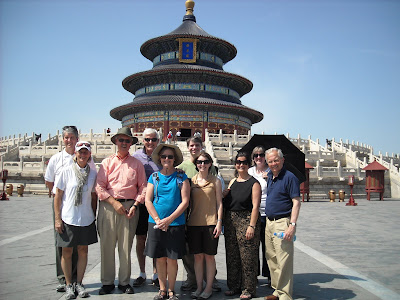China has long been on our short list of destinations, but the Furman trip offered many unique opportunities - most of them due to Dr. Kaup. Kate Kaup is a superhero. She provided a historical and cultural context for the places we visited and the people we talked to. She served as a translator, tour guide, money changer, professor, therapist, airline reservation clerk, and fixer. When a question was not answered to her satisfaction, Kate would stare at the person and say, "What is to be done?" In Chinese, of course. Then she would wait until she got the answer she desired. She organized meetings with alumni, university officials, embassy staff, and local villagers. Have an interest in health care? Kate found a traditional Tibetan medical doctor. Like rugs? She located a rug factory to visit...as well as a showroom to buy the rugs. Kate is a renowned scholar on China, but she never acted as though she was too important to answer our basic questions.
Thank you to Dr. Kaup for hosting our trip. Thank you to the many people at Furman who helped organize the logistics. Thank you to Furman for putting an emphasis on Asian Studies and for hiring Dr. Kaup. We look forward to more trips and opportunities like this in the future, although it will be almost impossible to match the majesty of China.


































 Local Dance Performance
Local Dance Performance

























